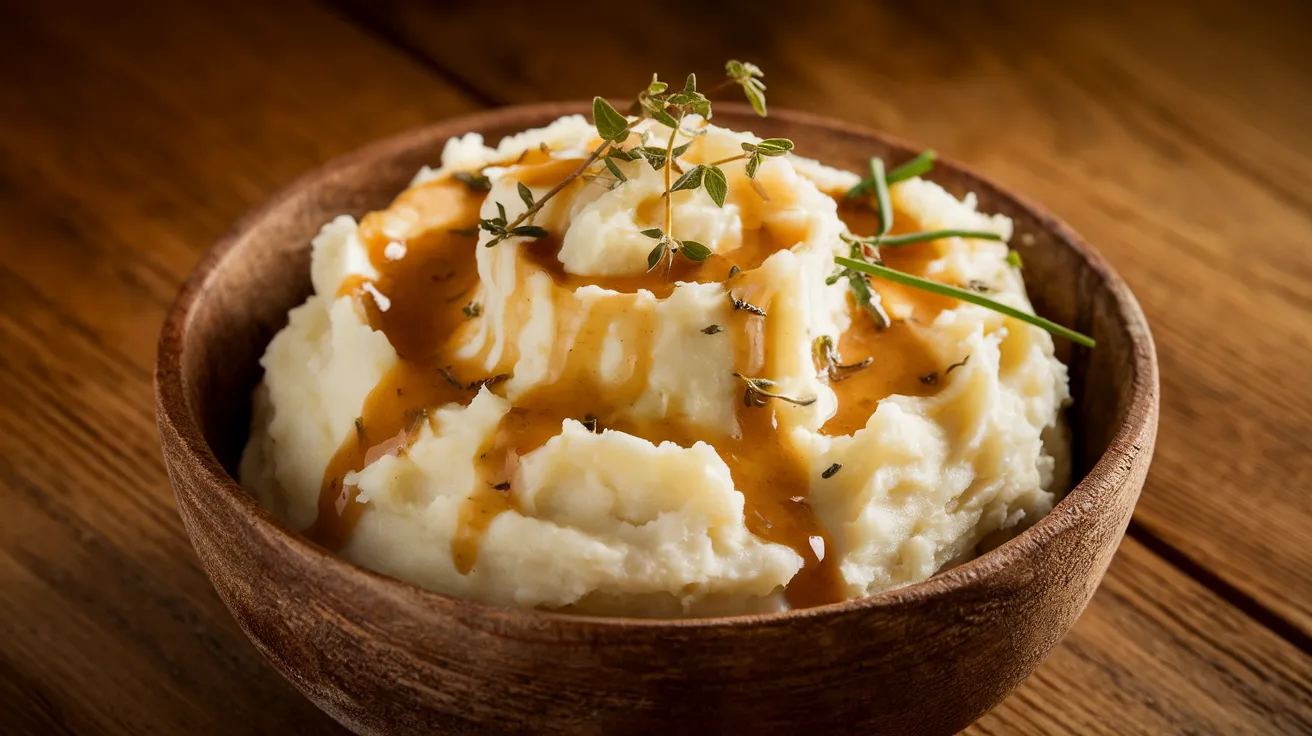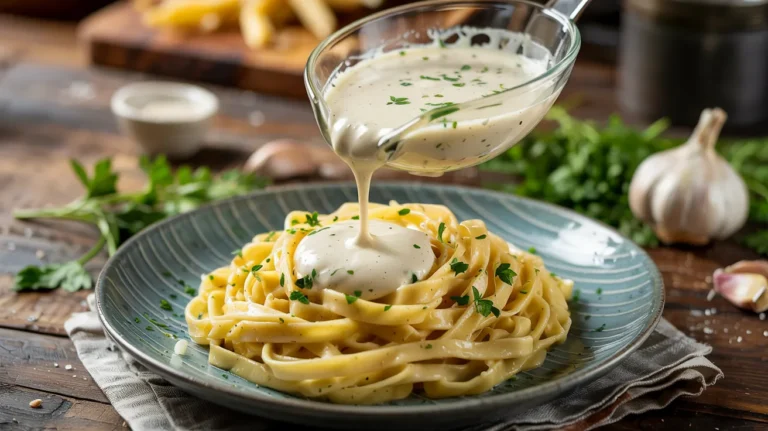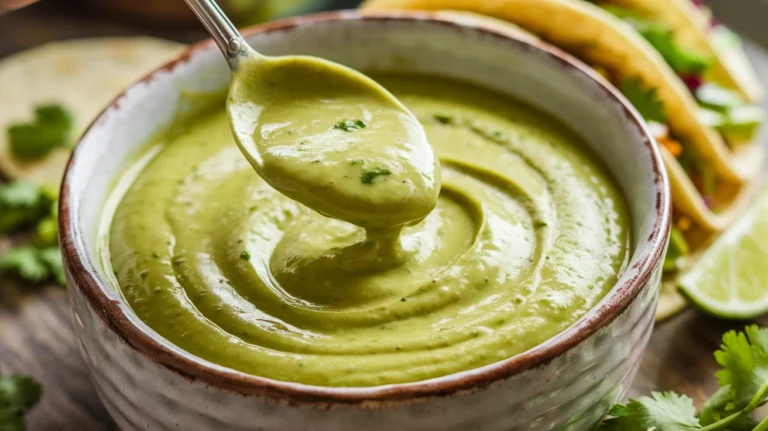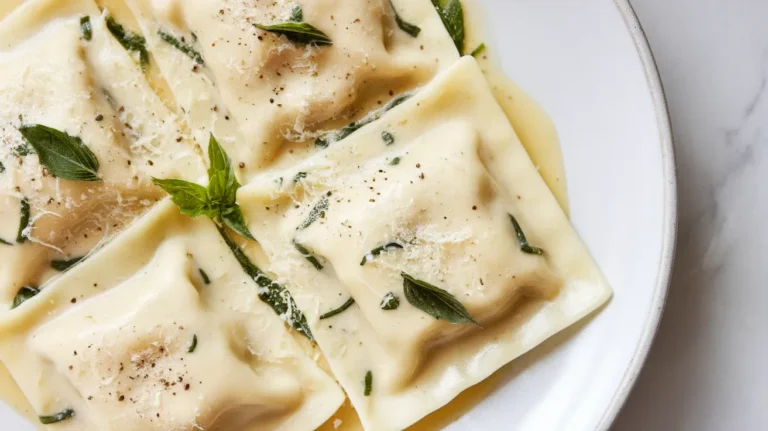Transform your everyday mashed potatoes into restaurant-quality comfort food with this rich, creamy sauce for mashed potatoes. This silky smooth gravy combines butter, herbs, and cream to create the perfect complement that elevates simple spuds into an unforgettable side dish your family will request again and again.
SERVES: 4 | PREP: 15 MIN | COOK: 20 MIN | TOTAL: 35 MIN
Ingredients
Base Sauce
| Ingredient | Amount |
|---|---|
| Unsalted butter | 4 tablespoons |
| All-purpose flour | 3 tablespoons |
| Chicken or vegetable broth | 2 cups |
| Heavy cream | ½ cup |
| Fresh thyme | 2 teaspoons |
| Garlic powder | 1 teaspoon |
| Salt | 1 teaspoon |
| Black pepper | ½ teaspoon |
Optional Flavor Boosters
| Ingredient | Amount |
|---|---|
| Grated Parmesan | ¼ cup |
| Fresh chives | 2 tablespoons |
| Sour cream | 2 tablespoons |
Step-by-Step Instructions
Phase 1: Creating the Base (8 minutes)
Step 1: Heat a medium saucepan over medium heat for 2 minutes. Add butter and let it melt completely without browning.
Step 2: Whisk in flour immediately once butter melts. This creates your roux – the thickening base for your sauce for mashed potatoes.
Step 3: Cook the roux for 2 minutes, whisking constantly. It should smell nutty but not turn brown. This removes the raw flour taste.
Step 4: Slowly pour in ½ cup of broth while whisking vigorously. This prevents lumps from forming in your sauce.
Phase 2: Building Flavor (7 minutes)
Step 5: Add remaining broth gradually, whisking after each addition. The mixture will look thin initially – this is normal.
Step 6: Bring to a gentle simmer over medium-low heat. You’ll see small bubbles around the edges, not a rolling boil.
Step 7: Add thyme, garlic powder, salt, and pepper. Stir well to distribute seasonings evenly.
Step 8: Simmer for 5 minutes, stirring occasionally. The sauce will thicken to coat the back of a spoon.
Phase 3: Final Touch (5 minutes)
Step 9: Remove from heat and slowly stir in heavy cream. This prevents curdling from temperature shock.
Step 10: Taste and adjust seasoning. Add more salt if needed – the sauce should be slightly overseasoned to complement mild potatoes.
Step 11: If using Parmesan, stir it in now while the sauce is still hot for smooth melting.
Step 12: Strain through a fine-mesh sieve if you prefer an ultra-smooth texture, though this step is optional.
Chef’s Notes
• Temperature Control: Keep heat at medium-low once simmering begins. High heat can cause the sauce for mashed potatoes to break or become grainy.
• Consistency Check: Your finished sauce should coat mashed potatoes without being too thick or watery. Aim for the consistency of heavy cream.
• Make-Ahead Tip: This sauce reheats beautifully. Store covered in the refrigerator and gently warm while whisking.
• Flavor Balance: The sauce should taste slightly salty on its own since it will be mixed with bland potatoes.
Nutrition Information (Per Serving)
- Calories: 145
- Protein: 3g
- Carbohydrates: 6g
- Fat: 13g
- Sodium: 380mg
Creative Variations
Herb Garden Sauce
Add fresh rosemary, sage, and parsley for an earthy flavor that pairs beautifully with roasted vegetables, similar to how different sauces complement orzo pasta dishes.
Mushroom Cream Sauce
Sauté sliced mushrooms separately and fold into the finished sauce for an umami-rich variation.
Cheese Lovers’ Sauce
Stir in sharp cheddar and cream cheese for an indulgent twist that’s as satisfying as any loaded nacho sauce.
Bacon Drizzle
Crumble crispy bacon into the finished sauce for smoky richness that transforms simple mashed potatoes.
Storage & Reheating
Refrigerator: Store covered for up to 4 days. The sauce will thicken when cold.
Reheating: Warm gently in a saucepan over low heat, whisking frequently. Add a splash of broth if too thick.
Freezing: Not recommended as dairy-based sauces can separate when frozen and thawed.
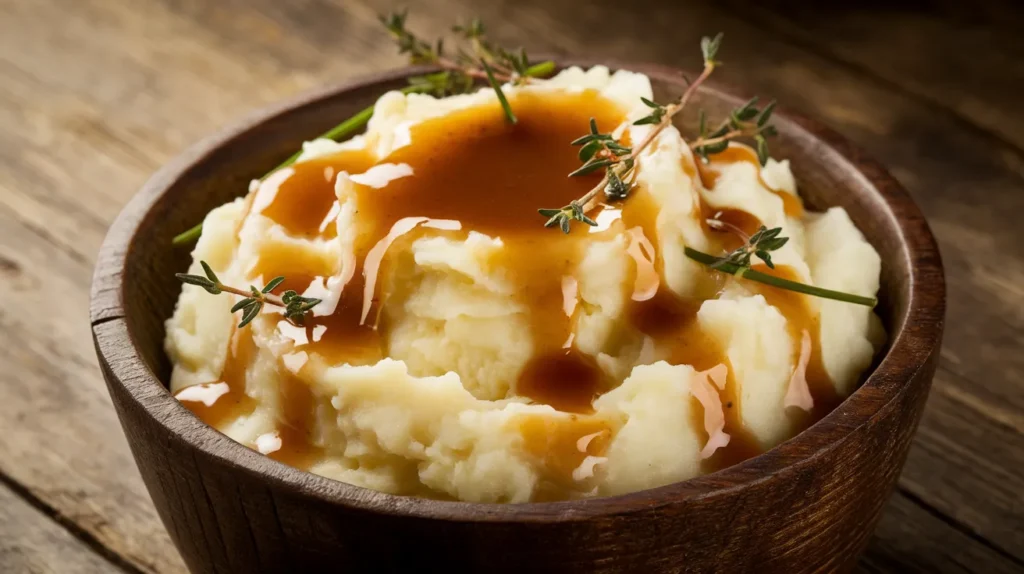
Troubleshooting Guide
Problem: Lumpy sauce Solution: Strain through fine-mesh sieve or use immersion blender to smooth out lumps.
Problem: Too thick Solution: Thin with warm broth, adding 1 tablespoon at a time while whisking.
Problem: Too thin Solution: Simmer uncovered for 2-3 more minutes to reduce, or mix 1 tablespoon flour with cold water and whisk in.
Problem: Broken or curdled appearance Solution: Remove from heat immediately and whisk in cold butter, one tablespoon at a time.
Problem: Bland flavor Solution: Add more salt first, then boost with garlic powder, herbs, or a splash of lemon juice.
Equipment Essentials
• Medium saucepan (2-3 quart capacity) • Wire whisk (essential for smooth texture) • Measuring cups and spoons • Fine-mesh strainer (optional but recommended)
Shopping List
Dairy Section
- Unsalted butter
- Heavy cream
- Parmesan cheese (optional)
- Sour cream (optional)
Pantry Items
- All-purpose flour
- Chicken or vegetable broth
- Garlic powder
- Salt and pepper
Fresh Herbs Section
- Fresh thyme
- Fresh chives (optional)
Success Secrets
1. Always use unsalted butter so you can control the salt level in your sauce for mashed potatoes.
2. Room temperature cream incorporates more smoothly than cold cream straight from the refrigerator.
3. Taste the sauce before serving – it should be slightly overseasoned to complement mild potatoes.
4. Keep the sauce warm in a covered pot until ready to serve, stirring occasionally to prevent skin formation.
5. Make a double batch – this sauce keeps well and elevates any leftover mashed potatoes throughout the week.
